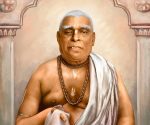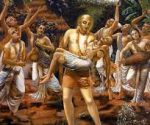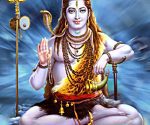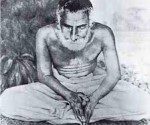Ramanuja – Who Was He Really?
Life Story – A 1000 Year Old History
60 yrs is the average life expectancy of man. Ayurveda states the full life expectancy of man to be 120 years. Very few people round the world are blessed enough to lead a fruitful life that long. Sri Ramanujacharya was one of the blessed few who lived a hale, healthy and hoary life for 120 yrs, a full life, Poornayush.
Ramanuja was born on 4th April, 1017 CE in Sriperambudur between modern Chennai and ancient Kanchipuram, to a pious, childless couple, Asuri Keshava Somayaji Deekshitar, a Vedic Pandit and Kantimati Amma, a devout lady. He was given the name Ilayazhwar at birth.
Descending Across Forms and Generations
Ramanuja, is a name which means younger brother, Anuja of Rama – a respectful way of referring to Lakshmana.
Ramanuja was also called by this name meaning the brother of Rama, since He was believed to be the incarnation of the Divinity Adisesha, also found to have incarnated as Lakshmana, the brother of Rama, 7100 years ago and as Balarama, the brother of Krishna, 5100 years ago. Ramanuja, is revered as a form of Adisesha, descended as an incarnation 1000 years ago.
Ascending Following
Ramanuja, who propounded Vishishtadvaita, a qualified form of non- duality, set Vaishnavism on the path that it has been followed since, for the last 1000 yrs.
In His long lifespan, He set the temple practices in all the Vaishnava temples across the land from Kashmir to Kanyakumari. Even the rituals at the premier temple of India, the Venkateshwara temple at Tirumala, were formalized by Ramanuja. He also reinforced the tradition of maintaining Nandavanams, flower gardens, attached to the temples for supplying flowers to the deities.
Ramanuja also set the Parampara of when and what rituals, Seva are to be performed in the temples and which hymns are to be recited during these Seva. This Parampara is since being followed in all Vaishnava temples of the land.
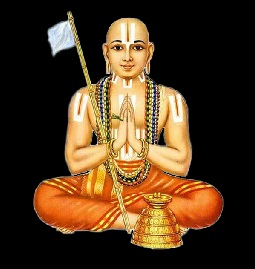
Ramanuja
Transcending Languages
Ramanuja was a scholar both in Samskrt and Tamil. He was also a scholar in a language prevalent then called Manipravalam which was a beautiful blend of Samskrt and Tamil.
Vishishtadvaita in Samskrt
He has authored many works which present the Veda and Upanishad from a Visishtadvaita perspective. The prominent ones which are 9 in number, include,
- 3 Bhashya (commentaries) – Sri Bhashyam on Brahma Sutra, Gita Bhashyam on Bhagavad Gita and Vedartha Sangraha an overview on Upanishads
- 3 Gadya (Prose Texts) – Sharanagati Gadyam, Sriranga Gadyam and Vaikunta Gadyam on Sri Vaishnavam
- 3 Vedanta – Vedantasara and Vedantadeepa (concise commentaries on Brahma Sutra) and Nitya Grantha (Daily Rituals for a Sri Vaishnava)
These 9 popular texts are referred to as Navaratna – 9 gems.
For all these, He earned the title Bashyakara which is one of the highest accolade one can receive in connection with the Veda. For, understanding the Veda itself is a great feat. To be able to write commentaries on the Veda for others to understand is an even greater feat. The Bashya works are usually bigger than the originals that they comment upon.
Ramanuja travelled all the way to Kashmir at the northern end of the land to read Bodhayana’s exposition, vritti on Brahma Sutra before completing His Sri Bhashyam, His commentary on Brahma Sutra.
Vaishnavism and Tamil
Ramanuja popularized the Tamil form of Vaishnavism.
He brought to fore the primacy of the Nalayira Divya Prabandham, the 4000 divine, specially composed verses in the traditional Tamil language by mandating their recitation as a daily temple ritual. He thus elevated Tamil to the status of a divine language.
He consecrated idols of the 12 Alwars, Tamil poets who had composed this divine poetry, in all temples from Tirumala to Thiruvananthapuram. He thus gave a position of pre-eminence to these Tamil poets, to their poetry and thereby to the whole Tamil language and made poetic Tamil an integral part of daily life.
In appreciation of His service to Tamil and divine Tamil poetry, after His times, people out of reverence added His idol too at the end of the line of the 12 Alwars. This happened in every Vishnu temple, in every town. It speaks volumes of the spontaneousness, the readiness with which people venerated Him and took to His teachings.
Of these 12 Alwars, 8 were not Brahmins. Treating them all on par, showed how Ramanuja looked at all as equals irrespective of their Jati – Varna.
Vaishnavism Across India
Not just in the Tamil land, Ramanuja travelled far and wide to not just spread the tenets of Vaishnavism but also to learn principles of Veda and Upanishad from across the land.
Besides Kashmir, Ramanuja also travelled to the northern slopes of Himalaya to Muktinath Kshetra in present day Nepal.
1000 years ago he had travelled across the length and breadth of the country from Thiruvananthapuram to Dwaraka in the west, to Kashmir and to Muktinath, Nepal in north, to Puri Jagannath in East to establish a parampara both in worship and good living. His prescribed format of rituals is still followed in many Vaishnava temples of India today.
Ramanujacharya’s codes of Vaishnavism was taken up and spread further through the Vallabhacharya sect of Gujarat and Rajasthan, Varkari sect of Maharashtra, Chaitanya sect of Bengal and Central India, Shankar Dev sect of Assam and Eastern India as well as the Swami Narayan sect followed today. Ramanujacharya and His teachings thus were a source of inspiration to many.
Ramanuja had travelled all through the land, uniting people, for, He saw the land as one timeless cultural entity with many kingdoms that kept coming and going with time.
In Service of the Community
Water Harnessing
Temple Tanks, Pushkarani, Kalyani, Sarovar Tirth, Teppam, Kulam are a common sight in every temple town that Ramanuja spent some time in, be it Tirumala, Kanchipuram, Srirangam or elsewhere. In all these places Ramanuja focussed on Theerthavari Seva wherein, He had the temple tank, Pushkarani cleaned, repaired and restored, thus ensuring clean water for the Lord and the community.
Ramanuja was one of those visionaries who had understood the importance of harnessing waters be it for serving the Divine or for the community. He built a few and renovated the many temple tanks right in the middle of the village, as a practice. This not only ensured availability of water for temple rituals but due to percolation, also ensured that the wells of those living near the temple, stayed ever full.
A standing example of the importance He gave to water harnessing can be seen in the form of the still in good repair, large, 2200 acre temple tank at Tondanur, called Tonnur Kere about 20km from Melkote.
With the derelict state of the temple tanks today, we need to take a leaf out of Ramanuja’s practice and renovate each temple tank, Pushkarani, to rejuvenate the ground water for the village community living around each temple. Pushkaram means fertile. Pushkarani is that which gives fertility to the land, in this case the locality. This will be a socially useful, productive and befitting obeisance that we can pay to Ramanuja, on His 1000th year anniversary.
Free Feeding
Ramanuja also formalized the parampara of giving prasadam, food, to devotees in every temple as He had recognized that this food, prasadam was one way of bringing people together. It was a land of prosperity and there was plenty. So He brought in the concept of locals coming together, contributing food grains to the temple, which in turn, after due rituals to the Lord, was offered back as Prasadam to the people. This one act brought locals together as it became a community service.
In times when hotels and restaurants were not the norm, travelers, mainly pilgrims across the land, had to rely on locals to offer them food and shelter. This practice of prasadam ensured that pilgrims visiting the temples did not have to starve or go door to door seeking hospitality. The needy of the village too were looked after due to this practice.
Selflessness & Compassion
There lived a great saint of those times in a temple town called Thirukoshtiyur near Madurai. Ramanuja learnt from this saint, His Guru the Moolamantra which when recited would lead the one reciting it, to Moksha, liberation. The only hitch in this was that, there was a Nibandana, a bond, that it should be taught only to a true disciple, one to one. There was a condition that if it was taught to everybody, while the one who receives the knowledge would attain Moksha, the one who imparts the Mantra, will be denied Moksha.
Ramanuja walked from Kanchipuram to Thirukoshtiyur to the ashram of this guru seeking audience and this Mantra. He was refused audience repeatedly by His Guru, 18 times, before the Guru seeing Ramanuja’s perseverance, relented to impart the Moolamantra to Ramanuja along with the Nibandana that went with it.
On learning the mantra, Ramanuja offered His respects to the Guru and then promptly climbed on to the Gopura, tower of the Thirukoshtiyur temple. He called all the village folk and broadcast this Moolamantra “Om Namo Narayana” to everyone.
Hearing of this the Guru admonished Ramanuja for breaking the Nibandana, the bond. Ramanuja obediently asked of His Guru what the punishment would be. The Guru responded that Ramanuja Himself would be denied Moksha for breaking the bond but all those who had now heard the Moolamantra “Om Namo Narayana” and shall chant it, shall attain liberation.
Instead of remorse, Ramanuja was overjoyed on hearing this. He replied to His Guru that if at the cost of Him alone not attaining Moksha, if everyone else would attain Moksha, then He had achieved the purpose of His life.
It is then that the Guru realized the quality of a true guide and teacher as someone who is selfless in teaching and benevolent in nature, having the interest of the pupil, the people and welfare of the society at large, in heart.
With this selfless act, from thereon, He was referred to as Ramanuja Acharya.

Leading by Walking The Path
The word Guru, etymologically comes from the root Gur, which means to lift, draw up, draw towards. A Guru is one who elevates thoughts, words and deeds of people around. Guru also denotes heaviness as heavy objects tend to pull and Gurutva Akarshana in Samskrt is the phonetic and semantic root for the sound and understanding of Gravity.
If Guru is one who elevates us, an Acharya is one who helps us stay elevated by showing us how to act, to stay elevated. An Acharya leads by action, by example. For, the very word Acharya comes from Achar, Acharam meaning practices, acts.
This land has been fortunate to have been adorned by hundreds and thousands of noble Acharya. Of all these, 3 stand apart for expressing clearly the 3 basic philosophies. Adi Shankara for Advaita, Madhva for Dvaita and Ramanuja for Visishtadvaita.
With His choice of propounding Visishtadvaita as well as His teachings, Ramanujacharya was building the bridge between Dvaita and Advaita.
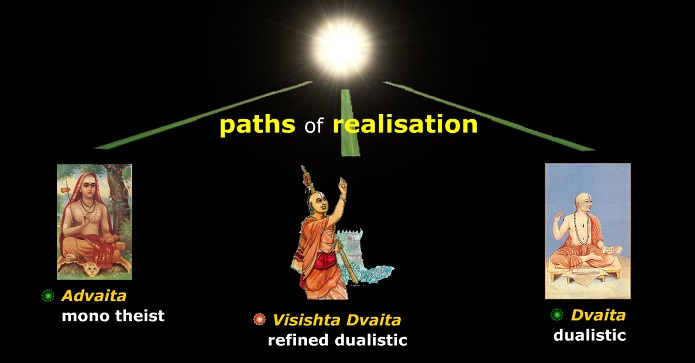
Social Engineering
Ramanuja was one who found social discrimination to be incorrect and acted on it to bring in the concept of Thirukulaththor where everybody was regarded as belonging to the same Kula, the lineage that comes from the divine.
Today people speak of social engineering as a new age jargon. What Ramanuja had practically implemented 1000 years ago itself, was way beyond all this jargon.
Temples and Rituals As Tools for Uniting Than Isolating
He established a model keeping the temple as the centre, creating roles for each community around it, finally joining them all through food, prasadam as a SamaPankti bhojana, eating food, sitting as equals in a row. Pankti meaning row and sama is equal.
Every community in the village had an important role to play in the running of the temple. He thereby amalgamated different sections of the society by associating them with a local temple the center of their community.
Every conceivable community such as potter, weaver, carpenter, ironsmith, farmer, oil producer, had their roles carved out to ensure the smooth and successful functioning of the temple.
He thus setup a model that brought in families from different communities, all as one, in service of the divine.
This was a major achievement, executed 1000 years ago, an amalgamation that had stood the test of time till recent years when such a model of using the temple itself as a uniting edifice, was wrecked in the name of “secular” Government policies. No other social engineering effort of people building, community building and harmonious living has stood the test of time for 1000 years like this.




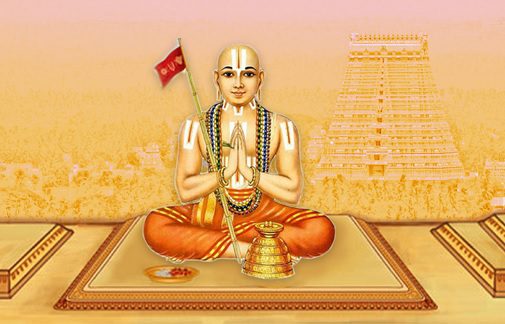 by
by 